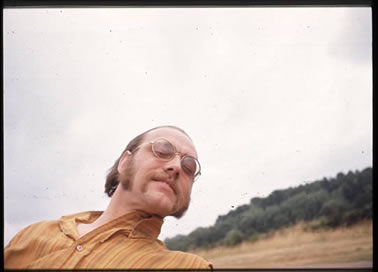0n
the 1969 August Bank Holiday,
a Saab swerved across a notorious blackspot on the A131 near Halstead
on
the Essex-Sussex border and crashed into a lorry. Its three occupants
and a dog, which had been sitting on the back seat, were killed
instantly. The tragedy received extensive press coverage, not least
for the terrible loss of three young lives (the oldest was just
25), but also because one of the passengers was Lady Catherine
Pakenham, youngest daughter of the Earl and Countess of Longford.
It cast an appalling shadow over what otherwise would have been
a glittering time for the family. Six of its members had books
published that year, including the much acclaimed biography
Mary
Queen of Scots by Lady Antonia Fraser, Catherine's older sister.
Also in the car were Gina Richardson, a colleague of Catherine's
from The Daily Telegraph, where they were both researchers, and
the driver, their friend, photographer Stefan Tyszko. The dog belonged
to him and was called Turnip.
Despite
Tyszko's young age (he was 24),
he was already marked out
by Fleet Street as a skilled and fearless photojournalist.
The Photography Yearbook (1970) ran a piece on him:
"He has great talent as a photographer and the ingenuity,
persistence, courage and determination that surely qualify him
for admission into the select ranks of the world's top photojournalists."
in
a hastily put together addendum, it was noted that, as the collection
went to press,
"news came that Tyszko, who in his short
life had seen and photographed so much sudden death,was himself
dead. Words fail us."
|


Portfolio
|
Despite
the acclaim, his work is now little known outside the picture
libraries of the newspapers and magazines who sent hirn on
assignment.
However, his own prints have been stored, perfectly preserved,
in the attic of his family's home in Essex. On these pages, published
as a portfolio for the first time since his death, are just a few
of them - in particular his evocation of the momentous events of
August 1968 in Prague, which the Yearbook admired so much.
Tyszko, having bluffed his way into the city as a Polish student,
was the first photographer in Prague to witness the tanks of the
Warsaw Pact advancing to restore the iron grip of Communism.
It was the making of him, and remains his most acutely observed
work, as well as the most vivid picture of the city after the brief
and liberating
"Prague Spring" under Alexander Dubcek.
And there was plenty of competition - not least from the celebrated
Josef Koudelka, later of the Magnum agency.
What
emerges also is a young man of exceptional charism,
who, true to the more relaxed mores of his times, behaved sometimes
flamboyantly perhaps even a little recklessly:
"Before he had left home, he had smashed up at least two
motorbikes,"
remembers his brother Simon, 14 years his junior. `The railings
he smashed into held his shape for weeks afterwards." A
romantic picture of an incipient adventurer develops further.
Sent to a strict Polish-Jesuit boarding school (his fatherwas
Polish, his mother English),
he rebelled by stealing a boat and rowing off downriver.
Barely a decade later, he was in Israel covering the Arab-Israeli
Six, Day War, and then Prague.
|